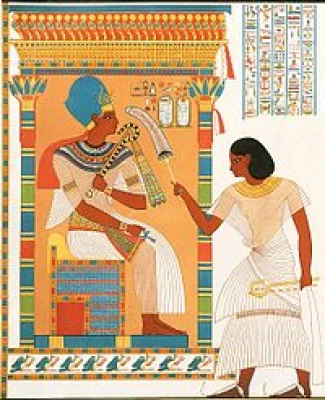
Power of Ancient Egyptian Priests
Power of Ancient Egyptian Priests
The ancient Egyptians knew that their gods had created the world by overcoming the forces of chaos, and that they needed human assistance to keep it intact. The inhabitants of Mesopotamia held the same belief, but felt they were collaborators with the gods, working every day to hold back chaos through the simplest acts, whereas the Egyptians thought it was enough to recognize how the world worked, who was responsible for its functioning, and to behave accordingly.
The fundamental cultural value of ma'at (or maât, harmony and balance) served as the basis for this conduct, and it was reinforced by an underlying power called heka (magic). Heka (whose godly figure is represented as the deity Heka) was, in the beginning, at the creation of the world. She existed before the other gods. Having made it possible for them to carry out their duties. Everyone, by observing the ma'at, helped to maintain the order established by the gods through the heka, but a special class was responsible for honoring and caring for the gods on a daily basis, and that was the clergy.
The priests of Ancient Egyptian dines were not like those in modern religions. They did not preach, provide commentary on their Scripture, seek followers, or carry out weekly services. Instead, caring for the god was the only had a duty in the temple.Both men and women could be members of the clergy, performing the same functions and receiving the same remuneration. Priestesses were more often devoted to worship of goddesses, whilst priests were considered to worship only male gods, but this was not always true as evidenced by priests of Serket, who were physicians and both genders, and the priests of the god Amon as well. The position of wife of the god Amun, held by a woman, would eventually become as powerful as that of the king.
Male priests were referred to as hem-netjer while females were known as hemet-netjer, which means a servant of a god. There was a structure of power in the priesthood, with the high priest - hem-netjer-tepi, meaning the foremost servant of god - at the highest rank, down to the lowest rank of wab priests. Wab priests engaged in the necessary but relatively uninteresting activities pertaining to the upkeep of the temple, and fulfilled all tasks for which they were called, including but not limited to, preparation for holidays.
Between these two positions lay a wide range of priests who performed all manner of tasks in the service of the gods: kitchen staff, janitors, porters, scribes - everyone who worked in the temple complex and had any connection whatsoever with the god was, in one way or another, a priest. It is likely that even the singers and musicians of the cult were required to receive some form of training which is reminiscent of priestly duties, although this was probably not the type of indoctrination or acculturation that the priests themselves underwent.
Astronomers who maintained the calendar, identified good and bad days, and deciphered dreams and omens were the priests of the hours. There were also physicians, who were also priests, the swnw (general practitioner) and the sau (magic practitioner), both of whom combined medicine and magic. A ka priest (also called a ka servant) was paid by a family to make daily offerings at the grave of the deceased.














